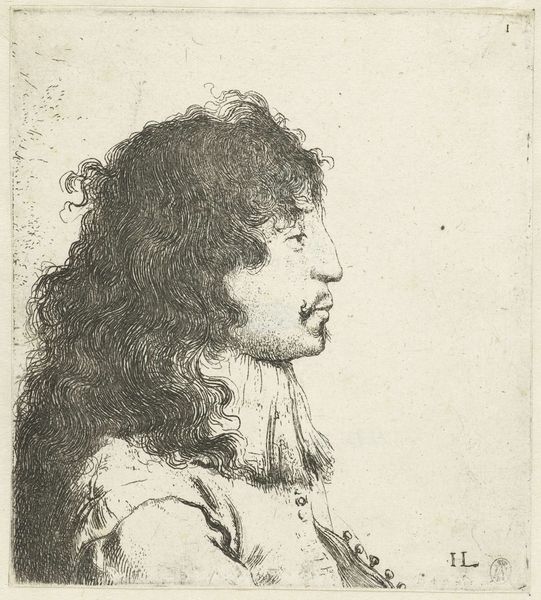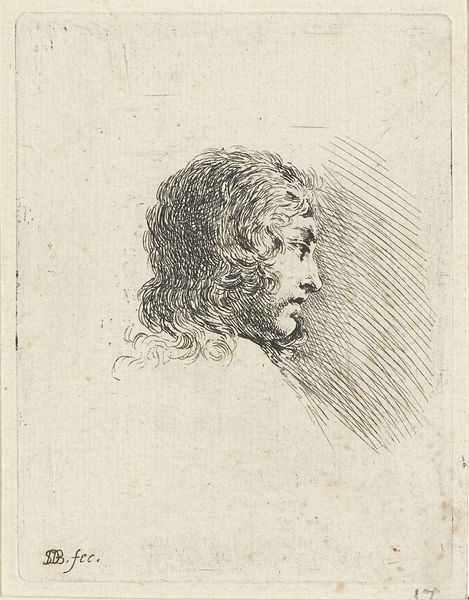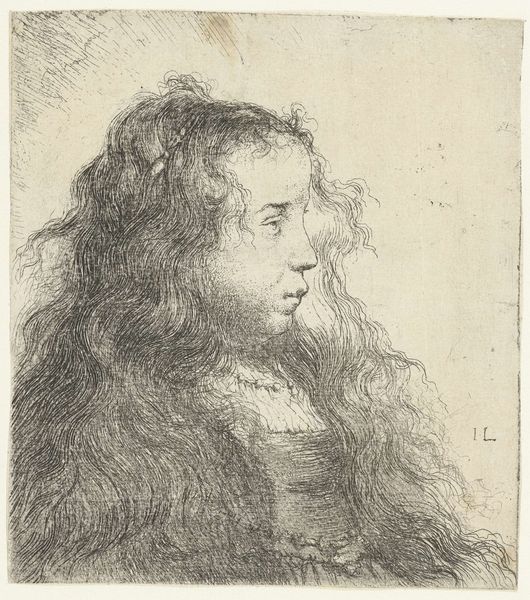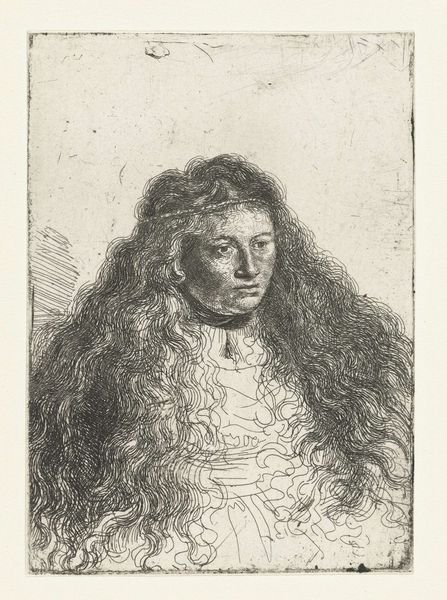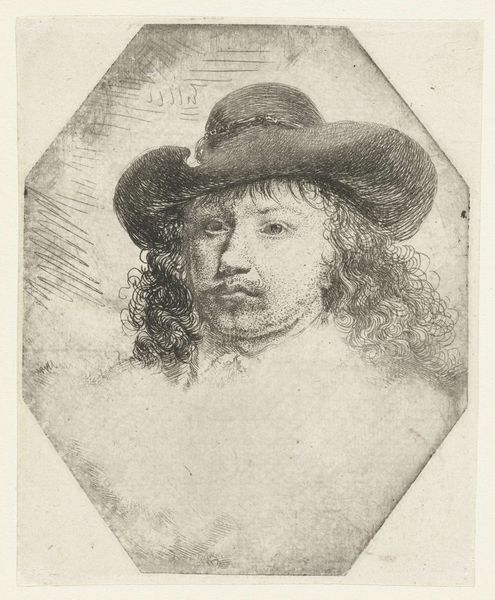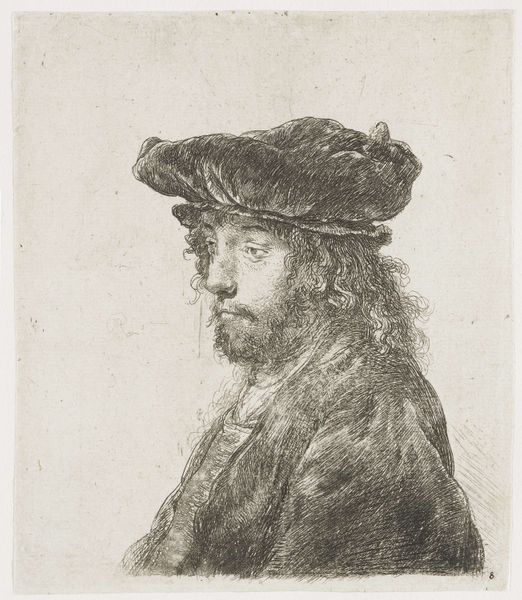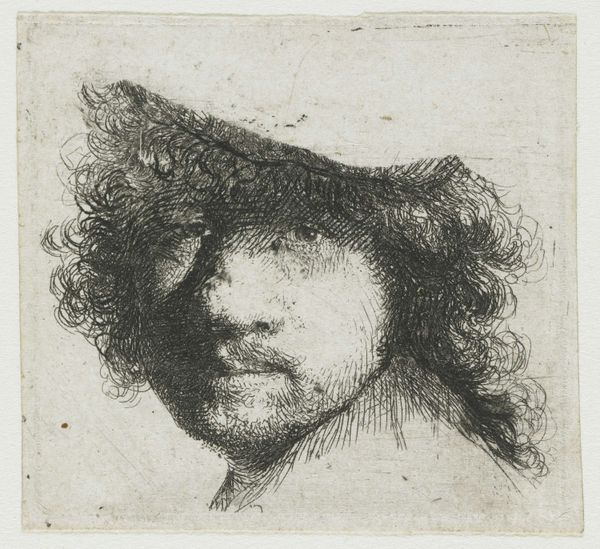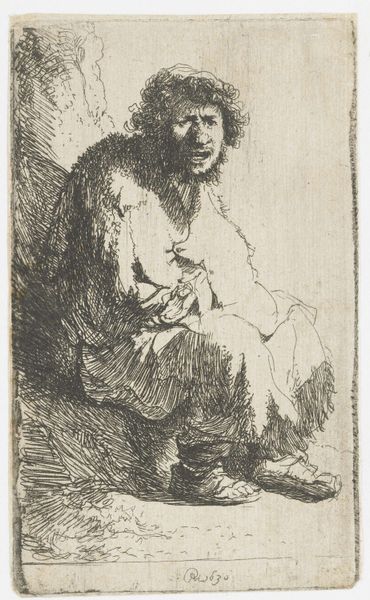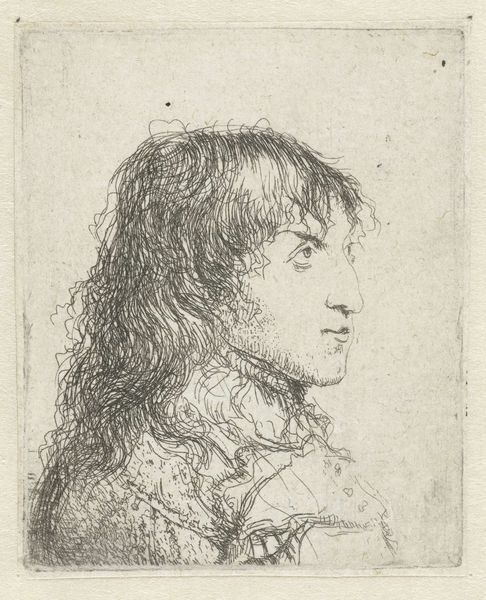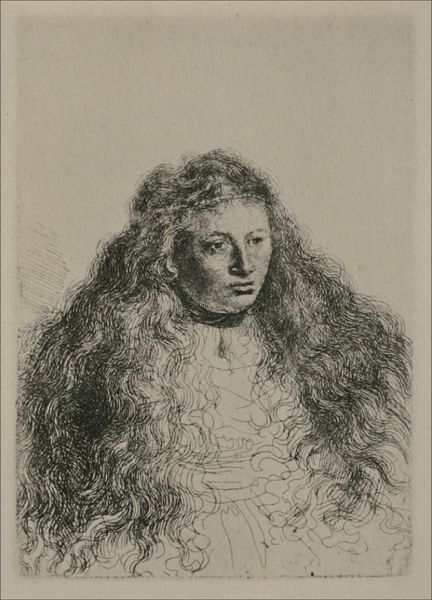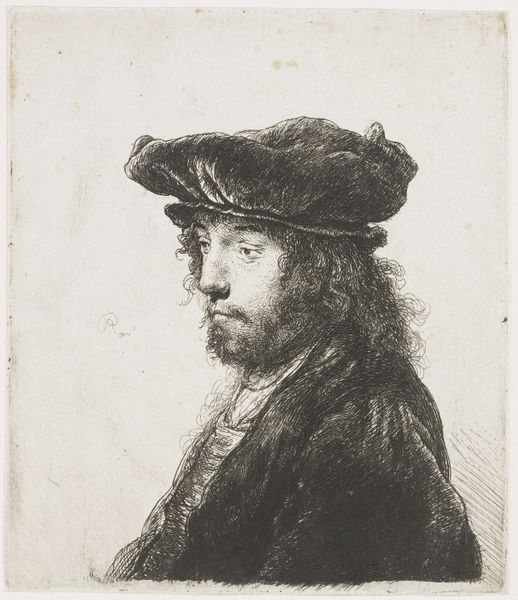
etching
#
portrait
#
baroque
#
dutch-golden-age
#
etching
#
figuration
#
pencil drawing
#
line
Dimensions: height 157 mm, width 142 mm
Copyright: Rijks Museum: Open Domain
Editor: Here we have Jan Lievens' "Bust of a Young Man", an etching dating back to the early 1630s. It feels quite intimate, like a glimpse into a very specific moment. The starkness of the line work almost gives it a sense of immediacy. What strikes you most about this work? Curator: It’s interesting you say 'intimate'. Portraits in the Dutch Golden Age served complex social functions, defining status and shaping identity. Consider how the *act* of portraiture reinforced societal hierarchies. Who was able to commission or create these works, and how did they project power? Editor: That makes sense. I suppose the relative affordability of etchings might have opened the door for a broader range of subjects? Was Lievens trying to capture something different here than a grand commissioned portrait? Curator: Precisely. Etchings offered a new kind of accessibility. This piece exists within the broader context of printmaking's democratization of art. But let’s not assume it escapes ideology. Look at the *presentation* of this "young man"—his fashionable hair, confident profile. Whose image was worth circulating? And for what audience? Editor: So even seemingly simple portraits played a role in shaping social perceptions. The more accessible they became, the more important it was who got represented. Curator: Exactly. And consider the institutions which display, preserve and study these pieces. How do museum practices reinforce certain narratives? Editor: Wow, I'll definitely look at portraits differently now, not just as individual depictions, but as part of a wider conversation. Thank you! Curator: The dialogue *around* the art is as revealing as the work itself. A good starting point to unravel how we consume art and its effect on culture.
Comments
No comments
Be the first to comment and join the conversation on the ultimate creative platform.
